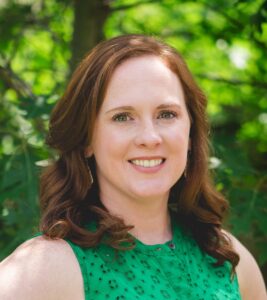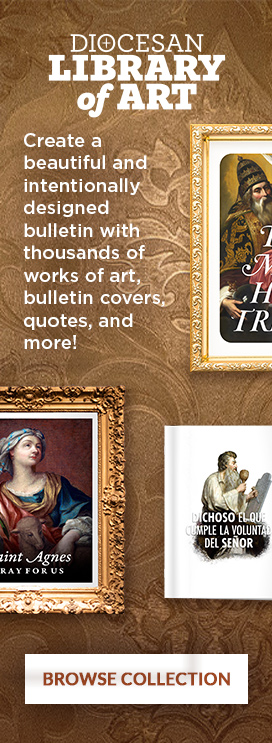Today we celebrate the feast of St. Mary Magdalene, the apostle to the Apostles. As St. John Paul II shared, she is “the first eyewitness of the Risen Christ.” On the first day of the week, in the early morning, Mary went to the tomb, likely to mourn. This detail of the early morning hints to me that Mary had been thinking about Jesus all night. Visiting his tomb was her first priority of the day. What she encountered shocked her.
As she wept, she bent over into the tomb. And encountered two angels in white “sitting there, one at the head and one at the feet where the Body of Jesus had been” (Jn 20:12). The angels spoke to her, “Woman, why are you weeping?”
The angels and their location is significant. Angels flanking a structure in the Old Testament indicated a border, or separation, between Man and the Divine. For example, in Genesis, the cherubim guarded the way to the tree of Life after the fall of Adam (see Gn 3:24). Beginning in Exodus 25, the Ark of the Covenant, the place where God again began to dwell among his people Israel, was flanked on the exterior with two cherubim: “Make two cherubim of beaten gold for the two ends of the cover” of the Ark of the Covenant (Ex 25:18).
Look closely at today’s Gospel, and you’ll see that the angels are not on guard outside the tomb as they were when they marked the borders of the Garden and the Ark of the Covenant. They are not marking a border at all. Instead, today’s angels are heralds for the resurrected Lord.
The Incarnation united the very presence of God with humanity. Situated inside the tomb, flanking the place where the Incarnation was actually laid, these angels seem to beckon Mary into God’s presence.
The angels did not flank a border; they flanked a presence – the presence of the Lord. In her grief, Mary did not yet understand that Jesus had risen, which is why she asked Jesus himself, “Where have you taken my Lord?”
Yet as he spoke her name, Mary recognized the resurrected Jesus. I like to imagine that Mary greeted Jesus with a huge bear hug since he tells her “Stop holding on to me.” That Easter morning, Mary was the first one to witness that the communion between Man and Divine was restored through the passion, death, and resurrection of Jesus, and that humanity was now able to participate in salvation.
Mary’s testimony to the disciples, “I have seen the Lord,” inspired the disciples to run to the tomb to see for themselves. Mary is a brave and inspirational leader in our Church. She was steadfast in her faith in Jesus even in times of sorrow and confusion. She recognized the angels and was not afraid to question them. She was the first to proclaim the resurrection to others with zeal. It’s fitting then that today we honor Mary Magdalene with a feast that is equivalent to the way in which we honor the Apostles, because she was the apostle to the Apostles.
Hoy celebramos la fiesta de Santa María Magdalena, la apóstol de los Apóstoles. Como compartió San Juan Pablo II, ella es “la primera testigo ocular del Cristo Resucitado”. El primer día de la semana, de madrugada, María fue al sepulcro, dispuesta a llorar. Este detalle de la madrugada me insinúa que María había estado pensando en Jesús toda la noche. Visitar su tumba era su primera prioridad del día. Lo que encontró la sorprendió.
Mientras lloraba, se inclinó sobre la tumba. Y se encontró con dos ángeles vestidos de blanco “sentados allí, uno a la cabeza y otro a los pies donde había estado el Cuerpo de Jesús” (Jn 20,12). Los ángeles le dijeron: Mujer, ¿por qué lloras?
Los ángeles y su ubicación son significativos. Los ángeles que estaban al lado de una estructura en el Antiguo Testamento indicaban una frontera o separación entre el Hombre y lo Divino. Por ejemplo, en Génesis, los querubines guardaban el camino hacia el árbol de la Vida después de la caída de Adán (ver Gn 3,24). A partir del Éxodo 25, el Arca de la Alianza, el lugar donde Dios nuevamente comenzó a morar entre su pueblo Israel, dos querubines estaban al exterior: “Haz dos querubines de oro batido para los dos extremos de la cubierta” del Arca de la Alianza (Ex 25,18).
Fíjate bien en el Evangelio de hoy y verás que los ángeles no están de guardia fuera de la tumba como lo estaban cuando marcaron los límites del Jardín y el Arca de la Alianza. No están marcando una frontera en absoluto. En cambio, los ángeles de hoy son heraldos del Señor resucitado.
La Encarnación unió la presencia misma de Dios con la humanidad. Situados dentro de la tumba, presentes en el lugar donde se colocó la Encarnación, estos ángeles parecen invitar a María a la presencia de Dios.
Los ángeles no crearon una frontera; crearon una presencia: la presencia del Señor. En su dolor, María aún no comprendía que Jesús había resucitado, por lo que le preguntó al mismo Jesús: “¿A dónde has llevado a mi Señor?”.
Sin embargo, cuando pronunció su nombre, María reconoció al Jesús resucitado. Me gusta imaginar que María saludó a Jesús con un abrazo fuerte ya que él le dice “Deja de aferrarte a mí”. Esa mañana de Pascua, María fue la primera testigo de que la comunión entre el Hombre y lo Divino se restablecía a través de la pasión, muerte y resurrección de Jesús, y que la humanidad ahora podía participar en la salvación.
El testimonio de María a los discípulos, “He visto al Señor”, inspiró a los discípulos a correr a la tumba para ver por sí mismos. María es una líder valiente e inspiradora en nuestra Iglesia. Ella fue firme en su fe en Jesús incluso en tiempos de dolor y confusión. Reconoció a los ángeles y no tuvo miedo de interrogarlos. Ella fue la primera en anunciar la resurrección a los demás con celo. Es apropiado entonces que hoy honremos a María Magdalena con una fiesta que es equivalente a la forma en que honramos a los Apóstoles, porque ella fue la apóstol de los Apóstoles.
 Elizabeth Tomlin is the author of Joyful Momentum: Building and Sustaining Vibrant Women’s Groups and contributing author to the Ave Prayer Book for Catholic Mothers. She is General Counsel for the Archdiocese for the Military Services, USA. Elizabeth is an Army wife and mother of three and currently lives in the DC area. She blogs at JoyfulMomentum.org or @elizabethannetomlin on social media.
Elizabeth Tomlin is the author of Joyful Momentum: Building and Sustaining Vibrant Women’s Groups and contributing author to the Ave Prayer Book for Catholic Mothers. She is General Counsel for the Archdiocese for the Military Services, USA. Elizabeth is an Army wife and mother of three and currently lives in the DC area. She blogs at JoyfulMomentum.org or @elizabethannetomlin on social media.
Feature Image Credit: Cristina Gottardi, unsplash.com/photos/-QTaNuv0Bzk
